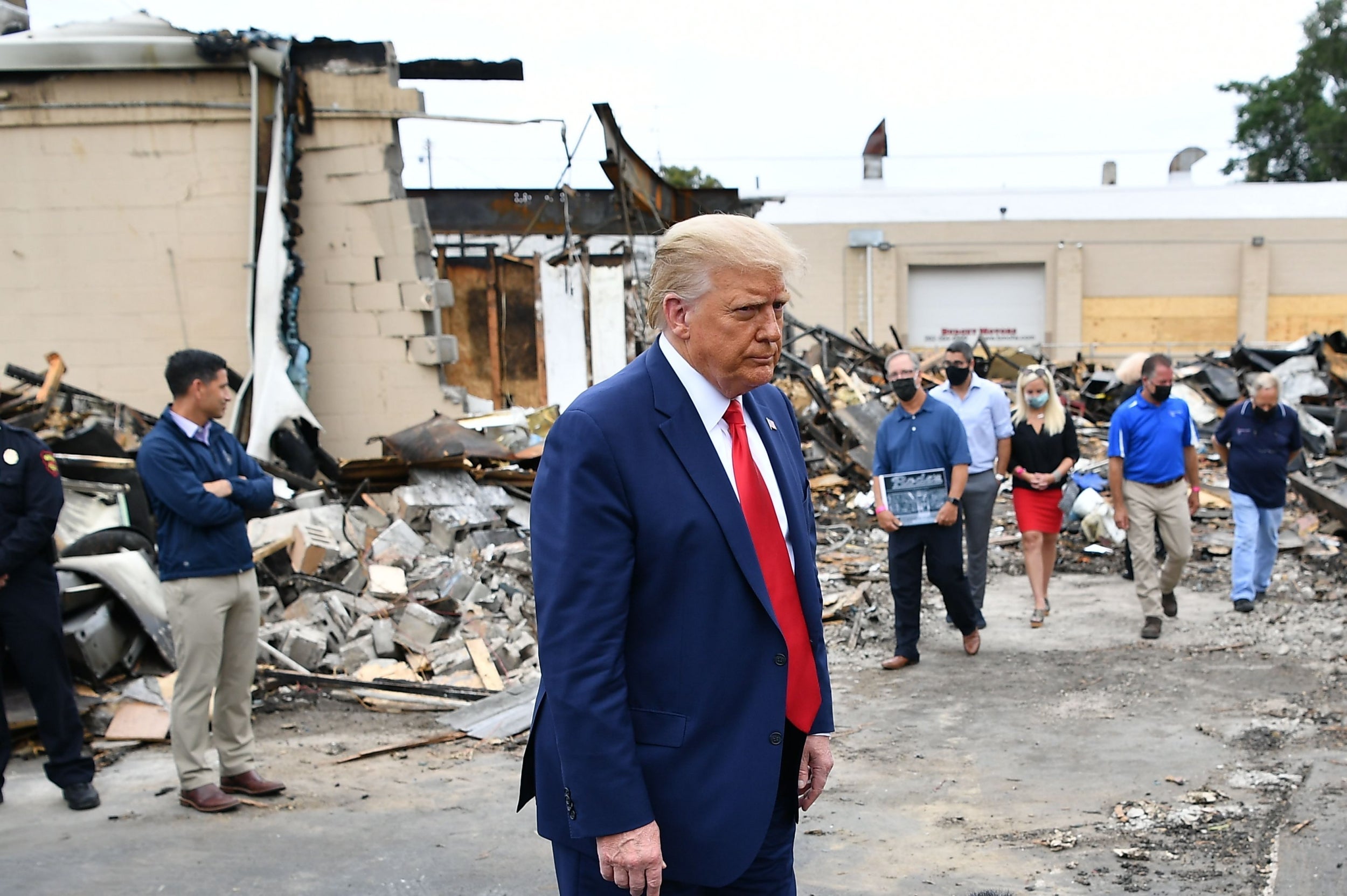Trump is using the Kenosha protests to distract from his failures
Editorial: Fear can be a powerful political tool for those unscrupulous enough to use it, and the US president enjoys instilling it in friends, foes and strangers alike

Does Donald Trump really believe that the protests in Kenosha – violent and destructive as some plainly were – represent acts of “domestic terror”? Does he really think that the problems in American policing are down to a few “bad apples”? Does he actually think he won the popular vote in 2016 “in a true sense”?
Where President Trump is concerned there is always the temptation to believe that his more outrageous remarks are so bizarre that they must, in fact, be the result of a carefully constructed political strategy, the work of brilliant spin doctors and data analysts who target his too-mad-to-be-real messages at key voters in swing states with uncanny accuracy and devastating effect. Liberals may not like it, but the voters he needs to attract have been scientifically analysed to determine their motivating prejudices; these are then beamed back at them.
Or he could just be saying or tweeting the first thing that enters his elaborately coiffed head, the authentic consequence of the “total honesty” his wife Melania praised in her encomium last week.
In a way it doesn’t matter, because the effect is much the same. No one, not even in an election year, would expect Mr Trump to go around talking like the Reverend Al Sharpton or even displaying minimal sympathy for the victims of police brutality and their families. Or, for that matter, acknowledging the existence of any data, fact or poll, that didn’t show him in the best possible light. His well-documented alienation from reality and apparent rejection of compassion is part of his brand, essential to his perverse appeal. He wasn’t wanted in Kenosha, because he’d stir up trouble, and that was probably why he went.
The obvious concern for anyone who yearns to see America become a nation at ease with itself is that Mr Trump’s pitch attracts too easily those who are not naturally Trump voters, but are worried about their safety and the future of their nation. The president presents himself as part of the solution to the unrest. Where “radical” Democrats are failing to protect their communities, so the Trump argument runs, he will solve the problem and restore law and order “in 10 minutes” by sending in the national guard or federal agents. Mr Trump looks and sounds again like an insurgent candidate running against a complacent Democrat establishment, which is his favoured sort of battleground.
In making claims about restoring peace and visiting the ruins of businesses in Wisconsin, the president is showing himself to be on the side of the “silent majority” reviving the (successful) Richard Nixon playbook in the similarly traumatic election year of 1968. In that sense, the protesters, or at least those who ended up involved in violence and destruction, have handed a struggling Trump campaign an easy, natural issue for an authoritarian populist to exploit to the fullest degree. It is no coincidence that Wisconsin is one of those crucial swing states that will determine America’s political future come November.
At the very least, President Trump will have some new lines to motivate his “base” and distract them from his devastating failures on Covid-19 and uneven economic record. Fear can be a powerful political tool for those unscrupulous enough to use it, and Donald Trump is a man who enjoys instilling fear in friends, foes and complete strangers alike.
The Democrats have to avoid being pushed into a position where they sound like they are condoning the violence. So far, President Trump’s claims about Joe Biden as some kind of elderly latter-day Lenin or Castro have been so ridiculous as to be ineffective, though we have yet to see how another two months of unremitting attrition will affect public sentiment.
What the Democrats need to highlight, time and again with maximum repetition, is that another four years of an aggressive, divisive and sometimes frankly unhinged Trump presidency will not heal America’s divisions, build a more racially just society – or end the violence. No matter how many national-guard contingents are deployed or how many rioters are jailed for disproportionate terms to set an example, the unrest won’t ease until someone in the White House decides to do something about it.
Race is such an intractable issue in America that few would be confident that a Biden-Harris administration would transform the situation, but there is at least a chance that the tensions will be lowered and the unrest will subside. Electing Donald Trump would mean the prospect that the rioting would never end, not least because it seems to serve his political purposes. Framed thus, the question of who to vote for answers itself.
Join our commenting forum
Join thought-provoking conversations, follow other Independent readers and see their replies
Comments